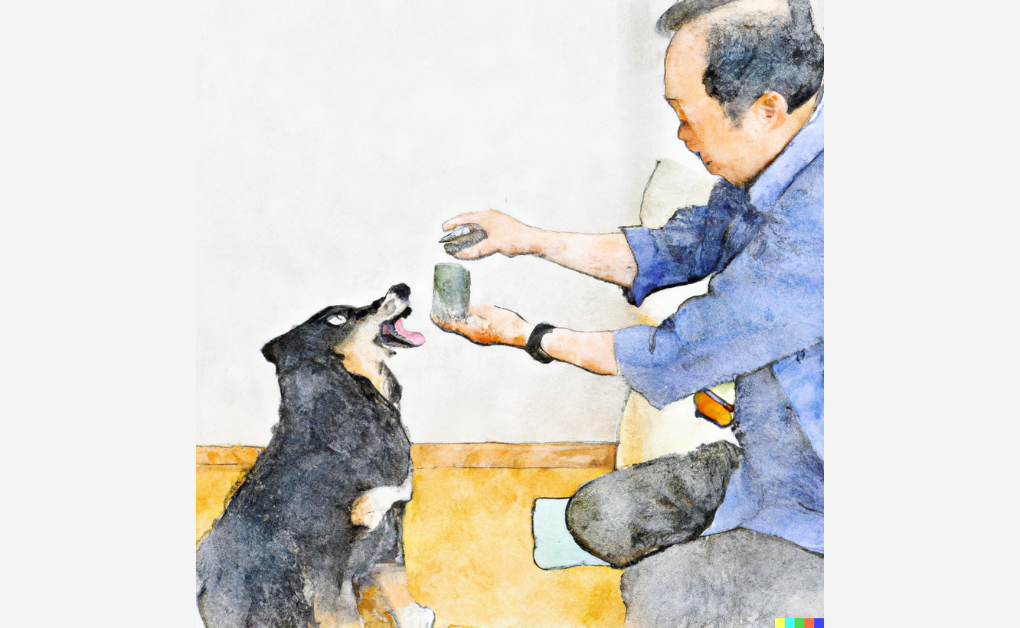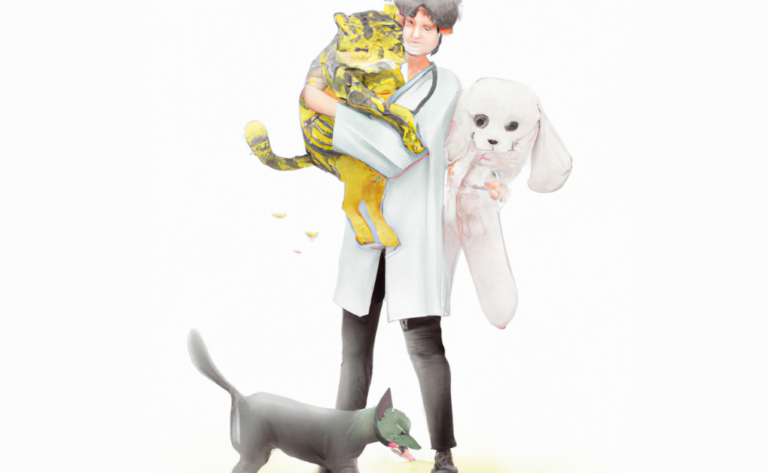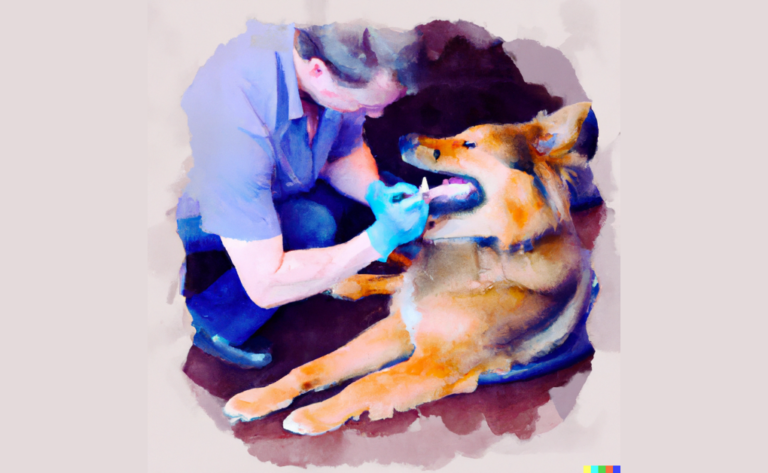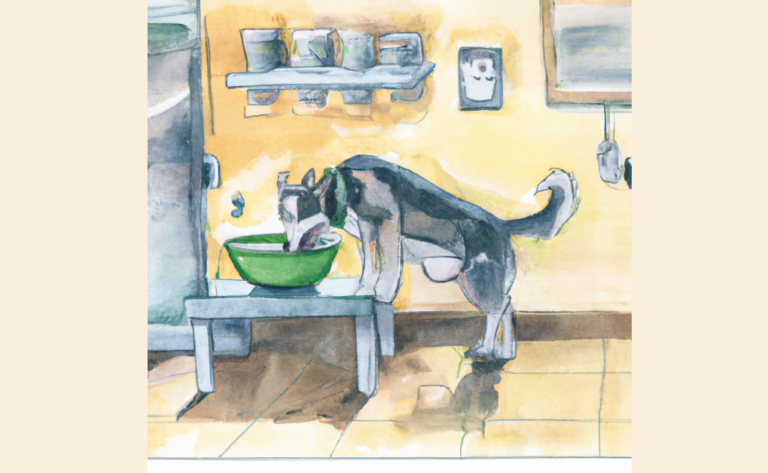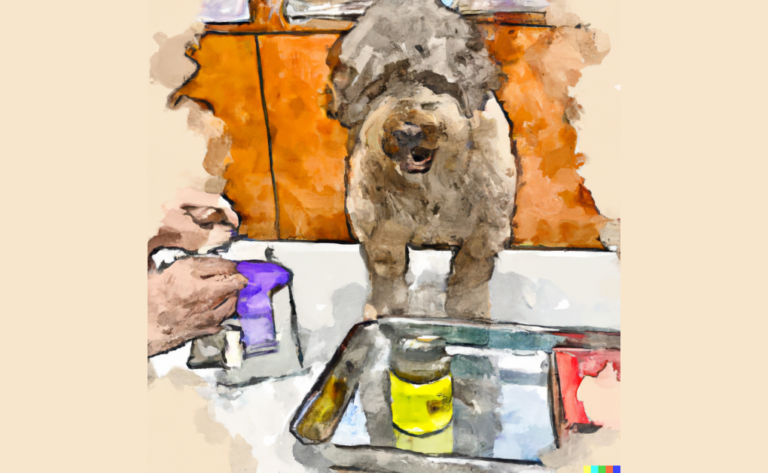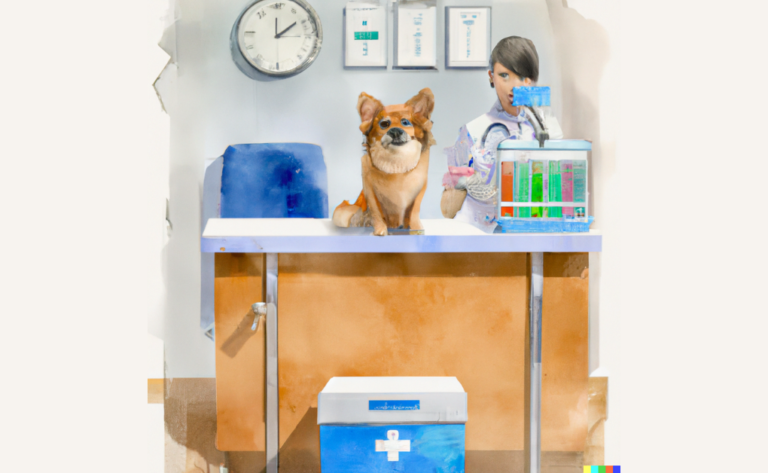What is Rectal Prolapse in Dogs?
Introduction
When Alice brought home her energetic Golden Retriever, Charlie, she never imagined she would encounter a health issue as concerning as rectal prolapse. One afternoon, after noticing something unusual about Charlie’s appearance, Alice’s world was turned upside down.
Rectal prolapse in dogs is where the inner lining or entire rectum wall, the large intestine’s last part, extends outwards from the anus. It appears as a red or pink cylindrical mass that can look swollen, especially if it remains exposed for a period. The severity of rectal prolapse can vary greatly, from minor protrusions to severe cases where a significant portion of the rectum is exposed, a potential emergency requiring immediate veterinary care. While uncommon, it can occur in any dog regardless of breed, age, or gender. However, it’s important to note that rectal prolapse often indicates an underlying health issue requiring attention.
Types of Rectal Prolapse in Dogs
Rectal prolapse in dogs can be classified into two main types based on the extent of the tissue involved:
Complete Rectal Prolapse
Complete anal prolapse in dogs is a severe condition where all rectal wall layers protrude through the anus. Unlike a partial prolapse, where only the inner lining (mucosa) is involved, a complete prolapse includes the entire rectal wall thickness. This condition often appears as a larger, tubular mass extending from the dog’s anus, causing discomfort and potentially leading to complications such as impaired blood flow and tissue death (necrosis). It requires immediate veterinary intervention.
Incomplete Rectal Prolapse
Incomplete rectal prolapse in dogs, also known as partial rectal prolapse or mucosal prolapse, occurs when only the inner lining of the rectum, the mucosa, protrudes from the anus. This is less severe than a complete rectal prolapse, where the entire thickness of the rectal wall is involved. In an incomplete prolapse, the affected area often appears as a smaller, reddish, doughnut-shaped mass around the dog’s anus. Despite being less severe, it can still cause significant discomfort to the dog and requires veterinary attention to prevent further complications.
Rectal prolapse in dogs can sometimes appear in conjunction with other rectal disorders. These may include:
- Anal Sac Disease: Anal sac disease is a common condition in dogs where the anal sacs, which produce a smelly fluid used for marking territory, become blocked, inflamed, or infected. This condition can lead to discomfort and increased straining during bowel movements, potentially causing or exacerbating a rectal prolapse.
- Gastrointestinal Parasites: Parasitic infections in the gastrointestinal tract, such as hookworms, roundworms, or whipworms, can cause diarrhea and straining, contributing to rectal prolapse.
- Colitis: This is colon inflammation, often resulting from dietary issues, stress, or infection. Colitis can lead to diarrhea and straining, increasing the risk of rectal prolapse.
- Rectal Tumors: Tumors in the rectum can obstruct the passage of stool and lead to straining during defecation. The increased pressure and straining can sometimes result in rectal prolapse.
- Rectoanal Polyps: These benign growths can cause straining during defecation, leading to rectal prolapse.
- Perineal Hernia: This condition where abdominal contents protrude through a weakness in the pelvic diaphragm, causing discomfort and straining, which can potentially cause rectal prolapse.
- Proctitis: Inflammation of the rectum and anus, known as proctitis, often causes discomfort and straining, resulting in rectal prolapse.
In each case, addressing the underlying condition is essential to managing and preventing rectal prolapse.
Causes of Rectal Prolapse in Dogs
Rectal prolapse in dogs, where layers of the rectum protrude through the anus, can be triggered by various underlying conditions that amplify the strain and pressure on the rectum. Here are the common causes of this condition:
- Gastrointestinal Disorders: Severe diarrhea, constipation, and inflammatory bowel disease can lead to excessive straining during a bowel movement, a common cause of rectal prolapse in dogs.
- Parasitic Infestations: Gastrointestinal parasites such as roundworms or hookworms can cause discomfort and straining, potentially resulting in rectal prolapse. This is particularly concerning for dogs with rectal prolapse, as the condition can exacerbate the effects of intestinal parasites.
- Urinary Disorders: Conditions like urinary tract infections or bladder stones can result in straining during urination, leading to an incomplete prolapse or even a consecutive irreducible rectal prolapse.
- Prostatic Disease: An enlarged prostate can cause straining in male dogs, contributing to rectal prolapse. In severe cases, urinary bladder incarceration may occur.
- Trauma or Injury: Any injury to the pelvic region or impairment to the muscles or nerves controlling the rectum can lead to a prolapse. This can result in fecal incontinence, where a mass will appear at the anus during straining.
- Obstruction or Masses: Tumors or foreign bodies in the digestive tract can lead to straining and subsequent rectal prolapse. These obstructions can cause significant discomfort and the appearance of a mass.
- Neurological Disorders: Certain conditions impacting nerve function can impair the dog’s ability to control defecation, potentially leading to rectal prolapse.
Remember, rectal prolapse is often symptomatic of these underlying health problems. Therefore, to effectively treat prolapse, addressing these root causes is essential.
Symptoms of Rectal Prolapse in Dogs
Several symptoms may be seen when a dog is affected by rectal or anal prolapse. The specific diagnosis of prolapse in dogs will depend on the severity and the underlying cause of the condition. Here’s what to look for:
- Visible Protruding Tissue: The most apparent symptom of a prolapsed rectum is the emergence of red, inflamed rectal tissue from the dog’s anus. This tissue can resemble a tube or a mass, and its size can vary, indicating the severity of the prolapse.
- Straining to defecate: It may signify rectal prolapse if your dog is straining excessively during bowel movements. This usually happens due to discomfort or inability to pass stool normally, indicating that something is incorrect.
- Presence of Blood: Bloody stool, or blood dripping from the protruding tissue, is another symptom. This typically suggests tissue damage or weakening of the structure that helps to keep the rectum in place.
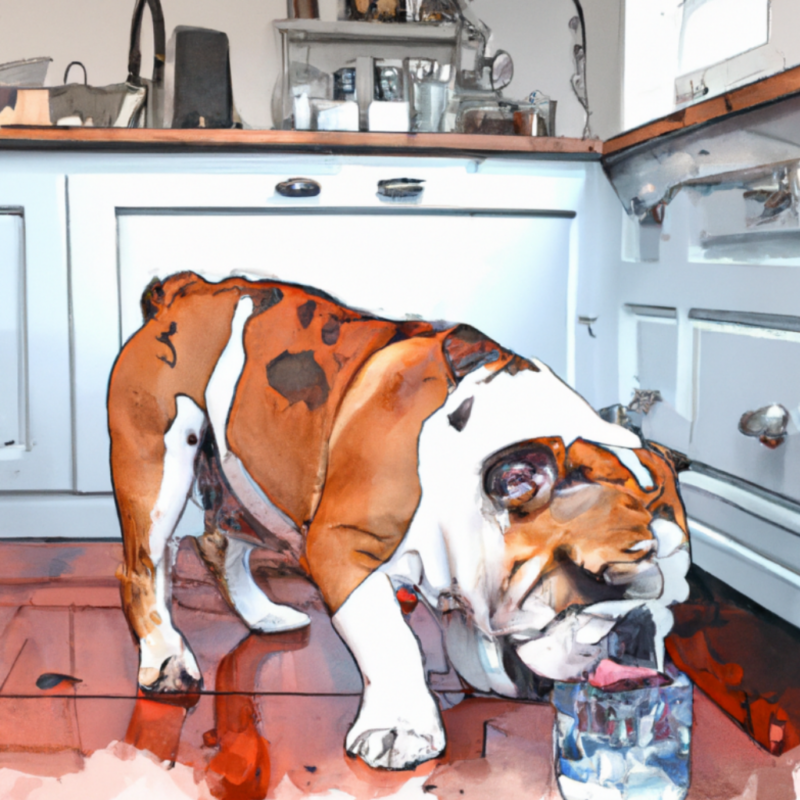
- Increased Attention to the Rear: Dogs experiencing discomfort due to rectal prolapse often manifest this through increased licking or chewing at their rear end. This might also involve the anal sac, which can cause discomfort.
- Behavioral Changes: The distress caused by a rectal prolapse can trigger changes in a dog’s behavior. This could include lethargy, loss of appetite, or visible signs of pain.
- Incontinence: Incontinence, or loss of control over bowel movements, may also be a rectal prolapse symptom. This is usually due to severe diarrhea or other gastrointestinal issues affecting bowel control.
Given these symptoms, rectal prolapse is a condition that requires immediate veterinary attention. In some cases, rectal resection may be done as a treatment method. Always remember that early detection and treatment significantly improve the prognosis for your pet.
Diagnosis of Rectal Prolapse in Dogs: Procedures and Techniques
Diagnosing rectal prolapse in dogs usually involves a series of steps beginning with a thorough physical examination of your dog. Your vet may require the following:
Physical Examination
The veterinarian will first conduct a thorough physical examination of your dog. This will involve assessing your dog’s overall health, looking for signs of discomfort, and inspecting the area around the anus to watch for protruding tissue or abnormalities.
Rectal Exam
A rectal exam may be required as part of the diagnosis process. During this examination, the veterinarian will carefully inspect the rectal lining and the inner layers of the rectum. This is done to assess the extent of the prolapse, the condition of the rectal tissue, and whether the tissue is too damaged.
Assessment of Protruding Tissue
The protruding tissue will be examined to determine whether it’s an incomplete or complete prolapse. In male dogs, it’s crucial to establish whether the tissue comes from the rectum or the urinary tract, as this could indicate anorectal or urinary bladder issues.
Further Testing
In some cases, further testing may be required. This could include blood tests, fecal examinations, or imaging tests such as X-rays to rule out other underlying conditions. These tests can also help determine if dogs who suffer from rectal prolapse are dealing with other issues, such as parasites or systemic illnesses, contributing to the problem.
Small Portion Biopsy
If the tissue remains prolapsed, a small portion may be biopsied. This is done to examine the cells and to confirm the diagnosis. However, this is typically only done if the tissue cannot be repositioned.
Through physical examination and further testing, the veterinarian will need to determine the best course of treatment. The aim is to rectify the issue and ensure measures are taken to keep the rectum in place, thus preventing future instances of prolapse. Therefore, diagnosis is crucial to provide the most effective and appropriate treatment for dogs with rectal prolapse.
Treatment Options for Rectal Prolapse in Dogs

Treatment of rectal prolapse in dogs typically involves treating the underlying condition causing the prolapse and reestablishing the rectum to its normal position. The specific strategies for achieving this may include:
Initial Intervention
The initial approach to treat the prolapse often involves delicately cleaning the extruding anorectal tissue to ward off additional damage or infection. A lubricant may be applied to the exposed tissue to maintain moisture and mitigate discomfort. This crucial first step prepares the dog for subsequent treatment measures, which may involve manual repositioning or surgical intervention.
Manual Repositioning
In some instances, especially those involving an incomplete prolapse or a prolapse that hasn’t been present for a significant duration, the vet might manually reposition the rectum. This procedure typically requires that the dog is under anesthesia for their comfort. Once the rectum is back in its proper place, a temporary purse string suture may be placed around the dog’s anus to secure the rectum and prevent the prolapse from recurring.
Surgery
Surgical intervention might be needed if manual repositioning proves impossible or the prolapse continuously recurs despite these efforts. The specific surgical procedure will depend on the severity of the condition and the dog’s overall health. When prolapsed tissue is healthy, it might be surgically replaced. However, if the tissue is severely damaged, a rectal resection might be necessary where a part of the rectum would need to be surgically removed, a procedure known as rectal resection and anastomosis.
The type of surgery a veterinarian may recommend for rectal prolapse in dogs generally depends on the severity of the condition and the overall health of the dog. Here are a few potential surgical interventions:
- Manual Reduction: In cases of recent prolapse, the vet might manually push the rectum back into place using a lubricated gloved hand. This is often followed by a purse-string suture to prevent recurrence.
- Purse-String Suture: This procedure involves placing a temporary suture around the anus to prevent the rectum from prolapsing again. This suture is usually left in place for a few days to a week and then removed.
- Colopexy: This surgical procedure involves suturing the colon to the abdominal wall to prevent it from moving and causing a rectal prolapse.
- Rectopexy: Similar to a colopexy, a rectopexy involves suturing the rectum to the abdominal wall to hold it in place.
- Resection and Anastomosis: In severe cases where the rectal tissue is significantly damaged or necrotic, a portion of the rectum may need to be removed. The remaining healthy sections are then surgically reconnected.
- Castration: If the prolapse is associated with an enlarged prostate in an unneutered male dog, castration might be recommended to reduce the size of the prostate and relieve the pressure on the rectum.
Addressing Underlying Conditions
Along with these direct interventions, addressing any underlying conditions contributing to the prolapse is vital. This could involve treating parasitic infections, adjusting the dog’s diet to manage diarrhea or constipation, or potentially treating conditions like rectal polyps, bladder incarceration, or issues with the anal glands. By addressing these underlying conditions, vets can help avert future occurrences of rectal prolapse.
Each of these treatments plays a crucial role in managing rectal prolapse in dogs. For example, an irreducible rectal prolapse might need a surgical resection of the affected tissue or a colopexy procedure. The specific strategy will depend on the individual dog’s condition and overall health.
Recovery and Management of Rectal Prolapse in Dogs
Post-Operative Care
Post-operative care is vital in a dog undergoing surgery for rectal prolapse recovery. This typically involves providing a clean, comfortable space for the dog to rest, keeping the incision site clean, and monitoring for any signs of infection or complications. Pain management, as directed by the veterinarian, is also crucial to help the dog recover comfortably.
Medication Compliance
Owners must comply with all prescribed medications, such as antibiotics, anti-inflammatory drugs, or pain relievers. This helps prevent infection, reduce inflammation, and manage pain, which will aid in healing.
Dietary Adjustments
Dietary adjustments may be necessary to prevent constipation or diarrhea, both of which can lead to straining and potentially exacerbate or cause a recurrence of rectal prolapse. This can involve feeding a high-fiber diet, providing plenty of fresh water, and possibly incorporating probiotics to support gut health.
Regular Check-ups
Regular veterinary check-ups are necessary to monitor the dog’s recovery progress. The veterinarian will likely want to examine the dog’s rectum to ensure it is healing properly and staying in place. These visits are also an opportunity to address any concerns or complications that may have arisen.
Management of Underlying Conditions
If the rectal prolapse was caused by an underlying condition, such as parasites or a gastrointestinal disorder, it’s essential to manage this condition to prevent a recurrence of the prolapse. This can involve ongoing medication, dietary changes, or other treatments as directed by the veterinarian.
Exercise Limitations
While the dog is recovering, limiting strenuous exercise may be necessary to avoid straining and disrupting the healing tissues. This can mean shorter, gentle walks and avoiding high-intensity play until the veterinarian gives the all-clear.
Frequently Asked Questions
Disclaimer: The information provided on this veterinary website is intended for general educational purposes only and should not be considered as a substitute for professional veterinary advice, diagnosis, or treatment. Always consult a licensed veterinarian for any concerns or questions regarding the health and well-being of your pet. This website does not claim to cover every possible situation or provide exhaustive knowledge on the subjects presented. The owners and contributors of this website are not responsible for any harm or loss that may result from the use or misuse of the information provided herein.

